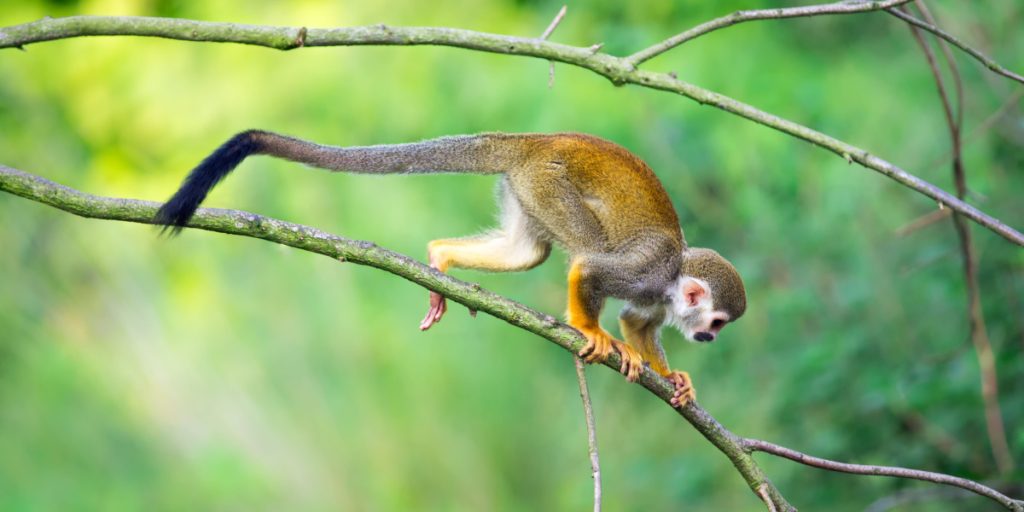Bo Xia and his team uncover a genetic alteration that explains why humans and other apes lost their tails.
Others are reading now
As a child, geneticist Bo Xia wondered why humans don’t have tails.
Years later, while recovering from a tailbone injury during his PhD at New York University, he found himself pondering the same question.
Xia and his team have now discovered a genetic alteration that might have the answer to the age-old question: why the ancestors of humans and other apes lost their tails around 25 million years ago.
The team studied mice genetically modified to mimic this change and found that it resulted in mice with shortened or no tails at all. However, getting to this discovery was no easy feat. It took nearly 2.5 years of hard work, creating several strains of gene-edited mice to prove their hypothesis. This research was finally published on February 28, after a lengthy review process.
Also read
Tail Tales in Mice
Intriguingly, not all primates have tails. Humans, along with apes and their ancient kin show just a hint of this feature in the form of the coccyx.
Xia, who is currently with the Broad Institute of MIT and Harvard in Cambridge, Massachusetts, wasn’t originally set to chase the genetic tale of tails but was drawn in by personal curiosity. Prompted by intuition, Xia turned his attention to a gene known for influencing tail development.
Back in 1927, Nadine Dobrovolskaya-Zavadskaya, a Ukrainian scientist, identified a laboratory mouse variant with a short tail, which she believed was due to a mutation in a gene she named T. This gene is recognized today as TBXT.
“You’ll find this gene in your first Google search,” Xia comments.
A quick delve into the geneticists’ favorite resource, the genome browser hosted by the University of California, Santa Cruz, revealed something intriguing: humans and other apes have a specific DNA sequence inserted into the TBXT gene that tail-bearing primates, like monkeys, lack.
Cracking the Genetic Code
In a landmark study released on bioRxiv in September 2021, Xia and his team revealed that an insertion in the ape TBXT gene results in a shorter protein. This alteration happens after the gene’s message is turned into messenger RNA, leading to a unique combination of the gene’s protein-making sections.
Mice genetically modified to replicate this TBXT change displayed varied tail anomalies, from reduced to completely absent tails, as well as some with bent or excessively long tails.
However, as Malte Spielmann pointed out, the research initially did not confirm that this specific ape genetic tweak could induce tail loss in mice. Itai Yanai, a study collaborator, mentioned that further tests conducted later did not significantly increase the shortened protein’s production, resulting in mice with normal tails.
The breakthrough came with a different modification to the mouse TBXT gene, which mimicked the human gene’s incorrect splicing. Mice with this genetic alteration were born with either short or missing tails.
From the Lab to the Trees
These additional tests, Yanai noted, reinforced their findings, though their primary conclusion remained unchanged.
Spielmann acknowledged the enhanced value of their revised work, indicating, “They clearly show that this change contributes to tail loss. But it’s not the only one.”
The team didn’t stop at one gene; they examined over 140 genes related to tail development, identifying numerous ape-specific genetic modifications that could also influence tail loss.
Gabrielle Russo shared her excitement about the research into the genetics of tail reduction.
While Xia’s team suggests tail loss might have facilitated upright walking and reduced tree climbing among ape ancestors, Russo remains skeptical, pointing to fossil evidence that suggests bipedalism developed later.
Apes are among several primates without tails, including mandrills, some macaques, and lorises, indicating multiple evolutionary paths to taillessness.
“Probably, there are multiple ways of losing a tail during development. Our ancestors chose this way,” Xia concludes.


